Apple wants to be your “intelligent guardian for health,” based on a 60-page paper shepherded by Jeff Williams, the company’s Chief Operating Officer.
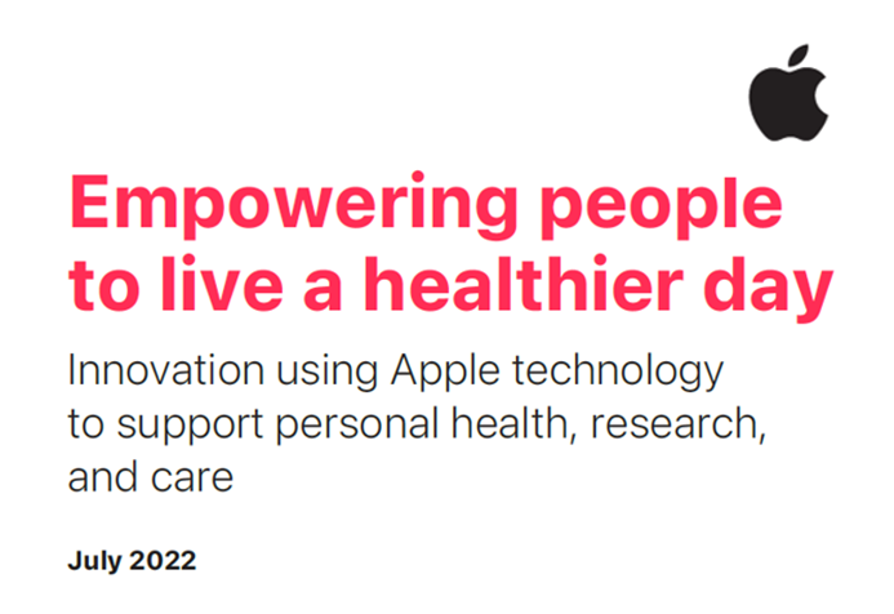
Published last week, the paper is one of the big signals trumpeted this U.S. summer marked by the BA.5 omicron subvariant of SARS-CoV-2, inflation pressures on our household budgets, social/political tensions, and hot-hot weather. I’m folding the report into my coverage this week on the Retail Health Battle Royale today, Day 3 of my week-long series updating us on the health/care ecosystem.
For the previous two days’ posts, see…
Day 1 – The context for retail health in the U.S., from HealthConsuming to the consumer experience
Day 2 – On Amazon’s planned acquisition of One Medical
Welcome to Day 3, exploring Empowering People to Live a Healthier Day — Apple’s public statement on the company’s evolution in health and wellness, and a framework for the future as (potentially) consumers’ tech-enabled guardian for health.
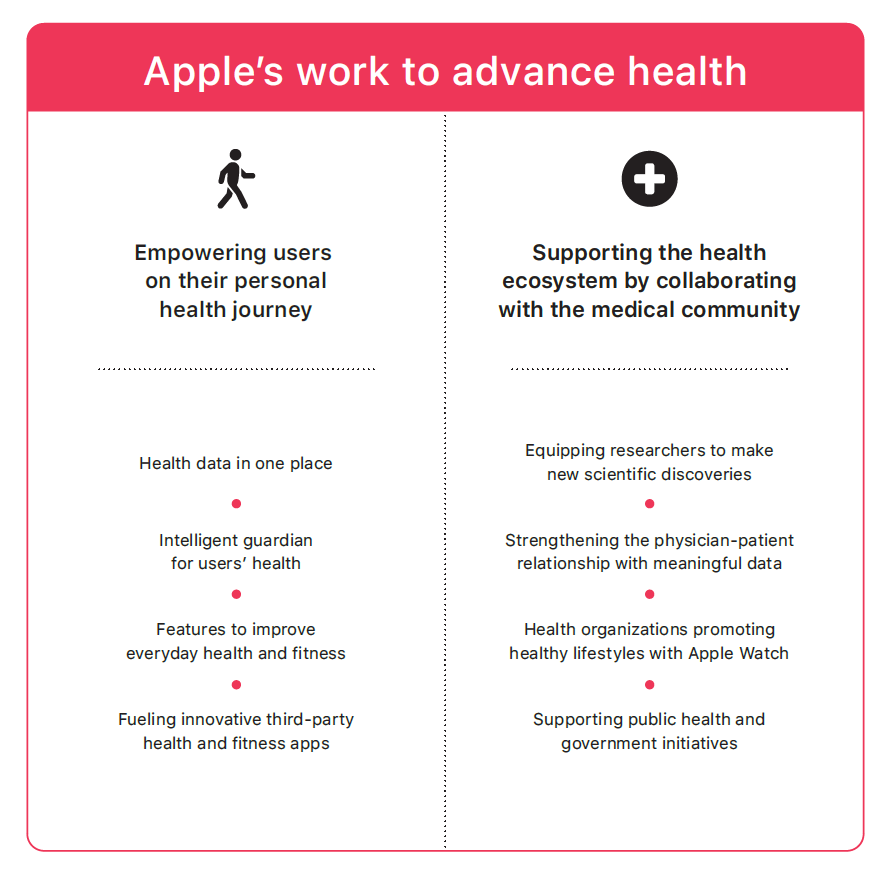
As the subtitle of the paper suggests, Apple is playing a role to support personal health, research, and medical care across the entire consumer/patient journey: from wellness and fitness (think: hand-washing and Nike Run Club) to managing chronic conditions and enabling clinician research and collaborations across industry silos.
The second graphic from the report breaks out the health consumer/health citizen from the health/care industry and ecosystem:
- Being that intelligent guardian for our health and fitness, including partnering with third parties for digital health tools and apps, and
- Supporting the medical community for research and innovation, physician-patient relationships, and bolstering public health.
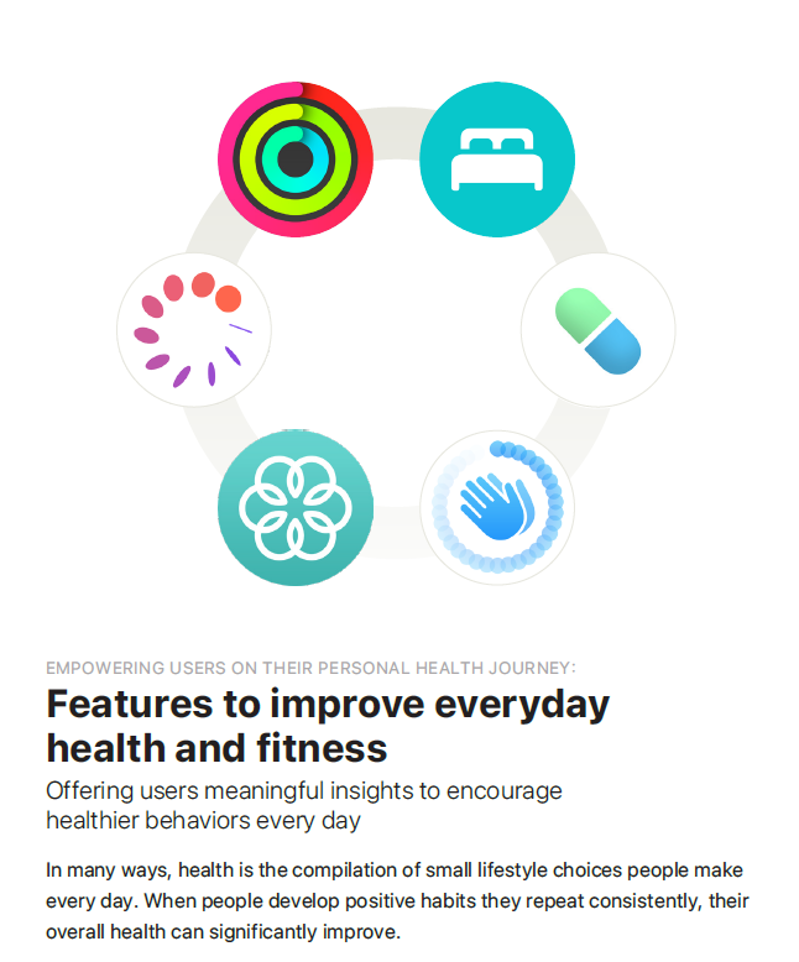
Central to Apple’s health support for consumers is putting “health data in one place,” a goal on which the Apple Watch and the Health app have been built. As an intelligent guardian, the sensor technology in the Apple Watch has evolved over time to help users “wear their health on their wrist.”
The report provides an overview of health and fitness features in detail, including activity, sleep, mindfulness, women’s health (e.g., cycle tracking, period prediction), heart health, mobility, hearing health, COVID-19 related factors, safety (like emergency SOS), medication scheduling and reminding, and research apps connecting consumers to studies and researchers.
Apple has progressed its digital health innovations for cardio fitness as an indicator of overall health, with high and low heart rate notifications, the ECG app coupled with the Apple Watch, irregular rhythm notifications, and an FDA-cleared AFib History feature.
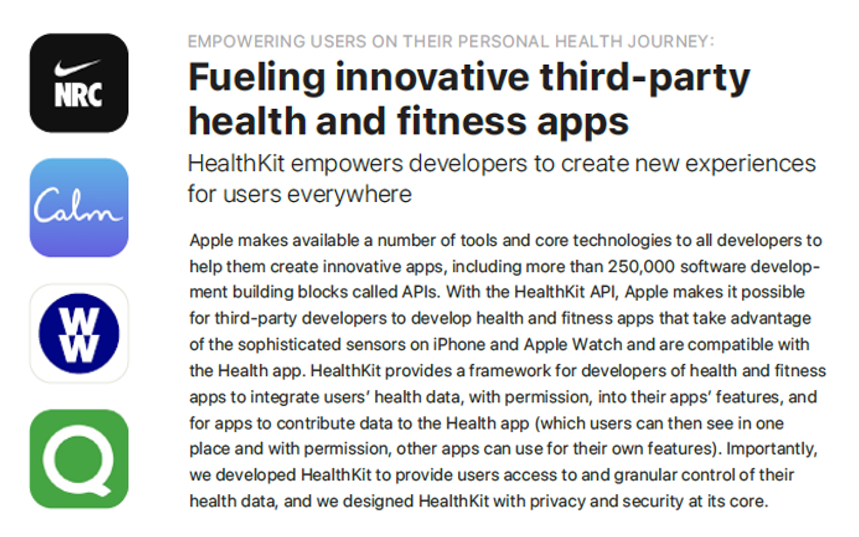
With the lack of interoperability plaguing so many health IT developments, Apple has streamlined the ability for software developers to create digital health tools using APIs, application programing interfaces (apologies for the wonkiness).
Here are but four examples of Apple’s health data ecosystem collaborations with Nike Run Club (for fitness), Calm (for mindfulness and mental health), WW (formerly Weight Watchers, for health management and nutrition), and Qardio (for heart health).
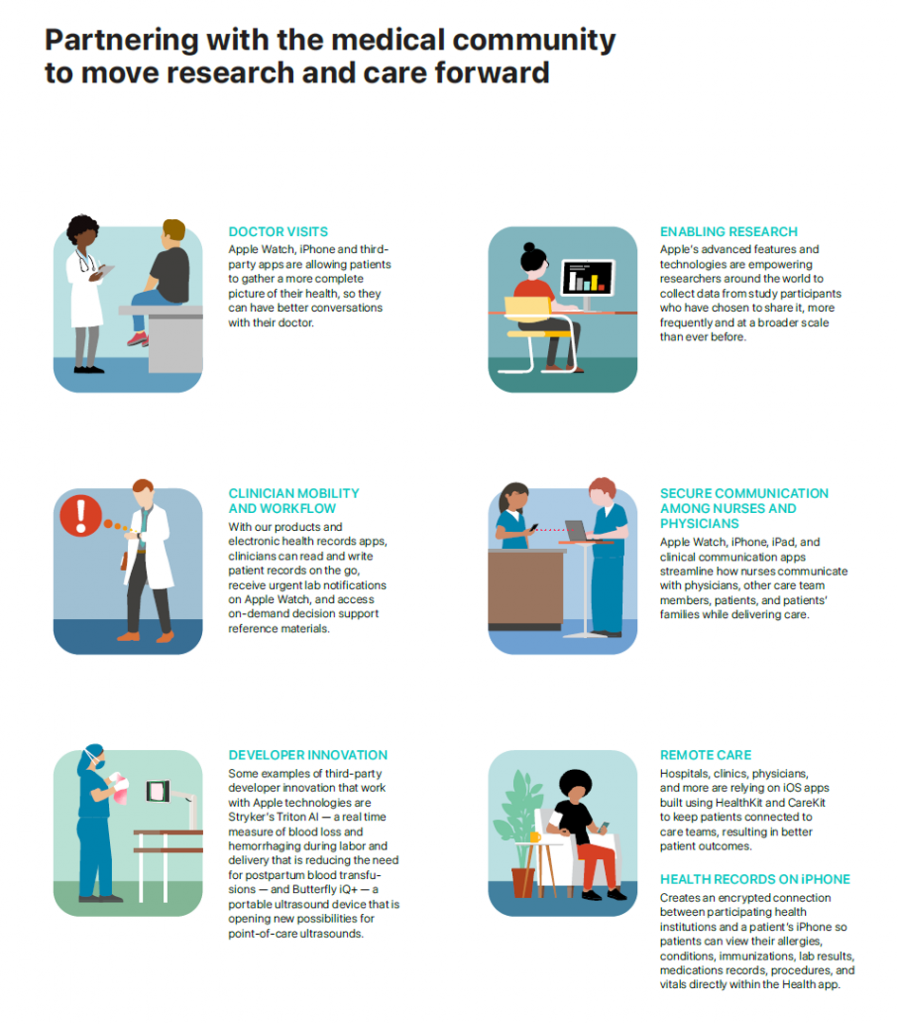
From consumers’ homes and workplaces and running routes to the research bench, doctor’s offices, and hospital beds, this graphic from the report illustrates scenarios of Apple’s research flows.
For example, a consumer’s Apple Watch and apps can generate data that informs patient-physician conversations about health leveraging information collection between doctor’s visits. This makes for a much more robust clinical conversation that can lead to more refined diagnoses and treatment recommendations.
Apple has also been working on health records through the iPhone, again working toward interoperability and accessibility for patients wishing to engage with their data, medication lists, lab results — enabled through the Health app.
There is much more for you to explore in the paper, including dozens of case studies across the different application flows and ecosystem stakeholders — patients, physicians, researchers, labs, tech developers, caregivers, nurses, pharmacists, et. al. See the “Extensions and Spotlights” appendix of the report for these details, to appreciate the growing reach and capabilities of Apple in health and medical care.
Health Populi’s Hot Points: Apple asserts that all health care innovations have been developed with two overarching principles:
- Subject to rigorous scientific validation processes with clinical experts; and,
- Putting users’ privacy at the center, with protections such as transparency and control. “Data privacy is critical for sensitive health data,” the report calls out.
These two points will be critical success factors for all tech companies developing, marketing, and supporting digital health tools.
First, consider the rigor and clinical evidence for the technologies.
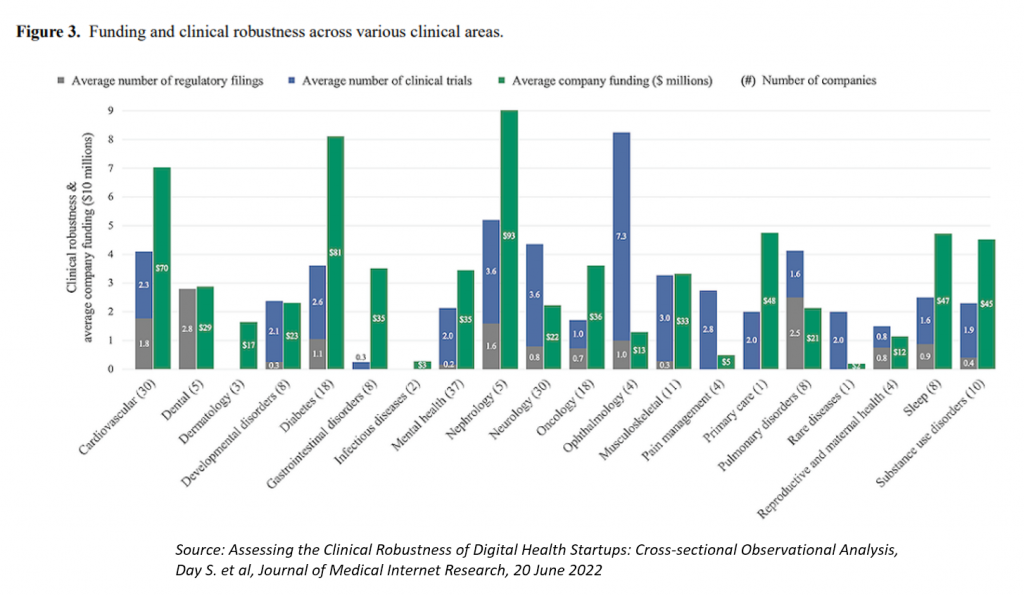
Very few digital health tools already used by patients and clinicians have robust clinical evidence underpinning their use, as discussed in a June 2022 study in the Journal of Medical Internet Research, the results of which are summarized here.
The researchers from Rock Health, University of Cambridge, and Johns Hopkins University assessed 224 digital health companies’ clinical claims, regulatory filings, and company funding. While several types of claims can be made for digital health innovations — such as patient engagement, economic benefits, or clinical impact on a patient’s health or well-being — only a small population of about 20% of the developments had rigorously tested solutions.
There was also a lack of correlation between funding of a company and the clinical or economic evidence — illustrating that, “funding amounts [might] reflect future anticipated value rather than current value,” the authors recognized.

Second, privacy. Trust underpins health engagement, we have learned time and again. And health consumers continue to have a “concerned embrace” of technology, balancing the trade-offs of personalization, convenience, and clinical support with the risks of privacy and security breaches.
The latter continue to plague U.S. health care, with the latest read from the U.S. Department of Health and Human Services Office for Civil Rights identifying 337 health data breaches int he first half of 2022. Healthcare providers accounted for the most breaches (about 3 in 4), the analysis from Fortified Health Security’s July 2022 cybersecurity report noted.
Apple asserts that, “Health app data is never shared with any third party without the user’s explicit permission.”
In the growing retail health ecosystem, privacy and trust will be key to attracting and retaining health consumers’ persistent use of and loyalty to health engagement. Apple already has its fans devoted to iPhones and Apple Watches, and clinicians’ expanded adoption of apps and research connections with the company.
Check out this video featuring CEO Tim Cook chatting with Jim Cramer about Apple’s developments as of January 2018….and click to the 20-minute mark to get to the headline…
If you zoom out into the future, CEO Tim Cook told Jim Cramer in January 2019, “What was apple’s greatest contribution to mankind? It will be about health.”
Three-and-a-half years later – after a global public health emergency, growing cloud computing, and consumers taking on greater self-care for their and their families’ health — Cook and company are all-in on health at Apple.
Tomorrow on Day 4 of the Retail Health Battle Royale, I’ll discuss the new Tech Giants in Healthcare report published in Germany – with important insights and lightbulb moments for U.S. health industry stakeholders. On Friday Day 5, we’ll weave this week’s insights into the holistic retail health update, focusing in on consumers with frugality, access, and whole health on their minds.




 I am so grateful to Tom Lawry for asking me to pen the foreword for his book, Health Care Nation,
I am so grateful to Tom Lawry for asking me to pen the foreword for his book, Health Care Nation,  Thanks to Feedspot for naming this blog, Health Populi, as a
Thanks to Feedspot for naming this blog, Health Populi, as a